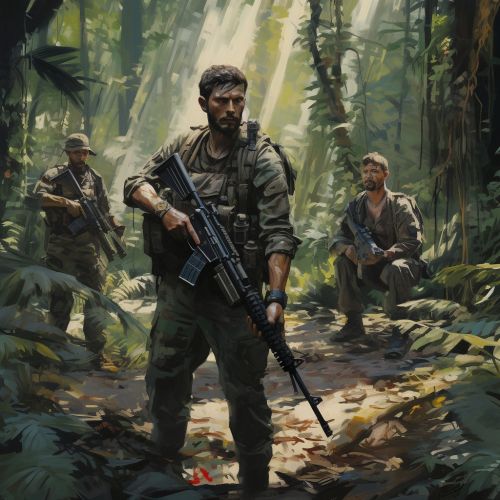Guerrilla Warfare
Introduction
Guerrilla warfare is a form of irregular warfare in which small groups of combatants, such as paramilitary personnel, armed civilians, or irregulars, use military tactics including ambushes, sabotage, raids, petty warfare, hit-and-run tactics, and mobility to fight a larger and less-mobile traditional military. This form of warfare is characterized by its reliance on the element of surprise, superior maneuvering, and the use of the local population for support.
Origins and Evolution
The term "guerrilla warfare" was first used during the Peninsular War in Spain against the French in the early 19th century. The Spanish word "guerrilla" translates to "little war". The tactics of guerrilla warfare have been used by various factions throughout history, and its strategies have evolved over time.


Strategy and Tactics
The primary strategy of guerrilla warfare is to wear down the enemy to the point of collapse. Tactics include ambushes, sabotage, raids, and hit-and-run attacks. Guerrilla fighters often use the terrain to their advantage, utilizing dense forests, mountains, and urban environments to conceal their movements and launch surprise attacks.
Role of the Civilian Population
In guerrilla warfare, the support of the civilian population is crucial. Guerrillas often rely on civilians for food, shelter, intelligence, and recruitment. The relationship between guerrillas and the civilian population can be complex and fraught with ethical dilemmas.
Modern Guerrilla Warfare
Modern guerrilla warfare has been influenced by advancements in technology and shifts in geopolitical landscapes. The rise of the internet and social media has changed the way guerrillas communicate, recruit, and spread propaganda.
